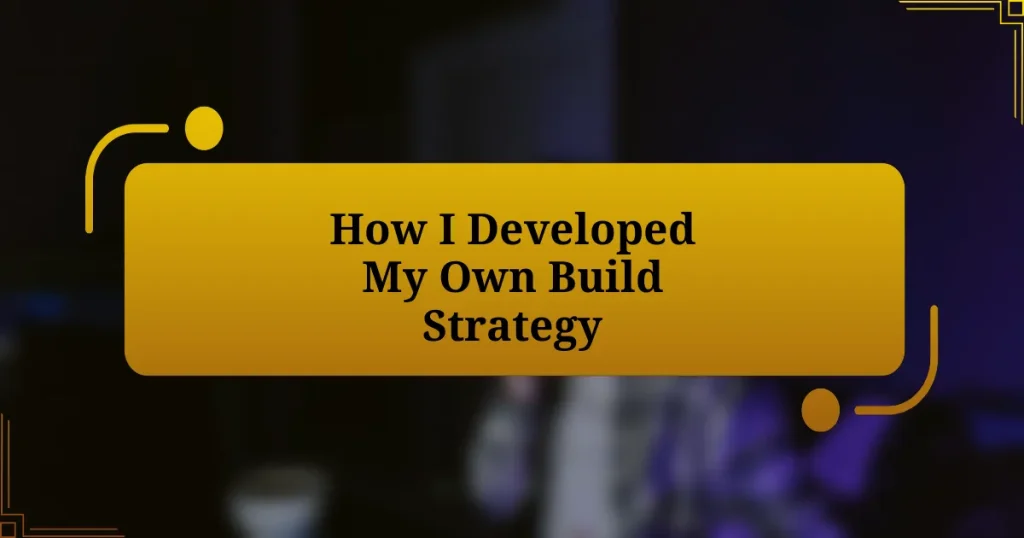Key takeaways:
- Build strategies in League of Legends are essential for adapting to enemy compositions and ensuring champion effectiveness during matches.
- Understanding item synergies and the current meta can significantly impact performance; flexibility in item choices is crucial for success.
- Champion roles dictate build strategies; supporting teammates and countering opponents effectively can lead to victory.
- Continuous reflection and experimentation with builds allow players to develop their strategies and improve gameplay over time.
Author: Clara M. Ashford
Bio: Clara M. Ashford is an award-winning author known for her captivating literary fiction that explores the complexities of human relationships and the intricacies of personal identity. With a background in psychology and a passion for storytelling, Clara weaves rich narratives that resonate with readers on a profound level. Her debut novel, Whispers of the Heart, garnered critical acclaim and was shortlisted for the National Book Award. When she’s not writing, Clara enjoys hiking in the mountains of Colorado and volunteering at local literacy programs. She lives in Denver with her two adventurous dogs.
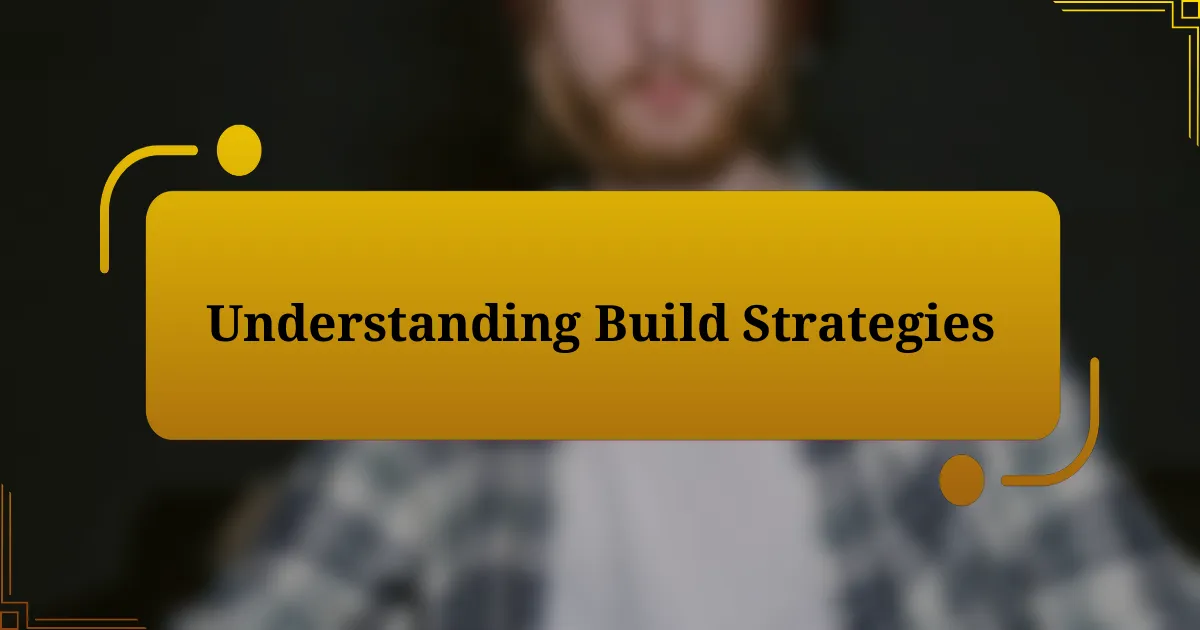
Understanding Build Strategies
Build strategies in League of Legends are crucial for success in gameplay, as they dictate how champions perform in different phases of the game. I remember during my early days, I often found myself confused, trying to mimic the builds of pros without understanding the reasoning behind each item choice. This led to frustrating moments when my favorite champion didn’t quite feel as powerful as I expected.
Crafting a build strategy involves not only selecting items but also considering the synergy between your champion’s abilities and the enemy’s team composition. I recall a particular match where I switched my usual build to adapt to a heavy AD (Attack Damage) enemy team. It felt exhilarating to see the impact of my choices as I successfully countered their damage output with my itemization. Have you ever felt that rush when your strategic changes turn the tide of a match?
Understanding the nuances of build strategies means constantly adapting and learning from each game. I often find myself reflecting after matches, analyzing what worked and what didn’t with my build. This self-review not only sharpens my future strategies but also deepens my connection to the game, transforming each failure into a stepping stone for growth.
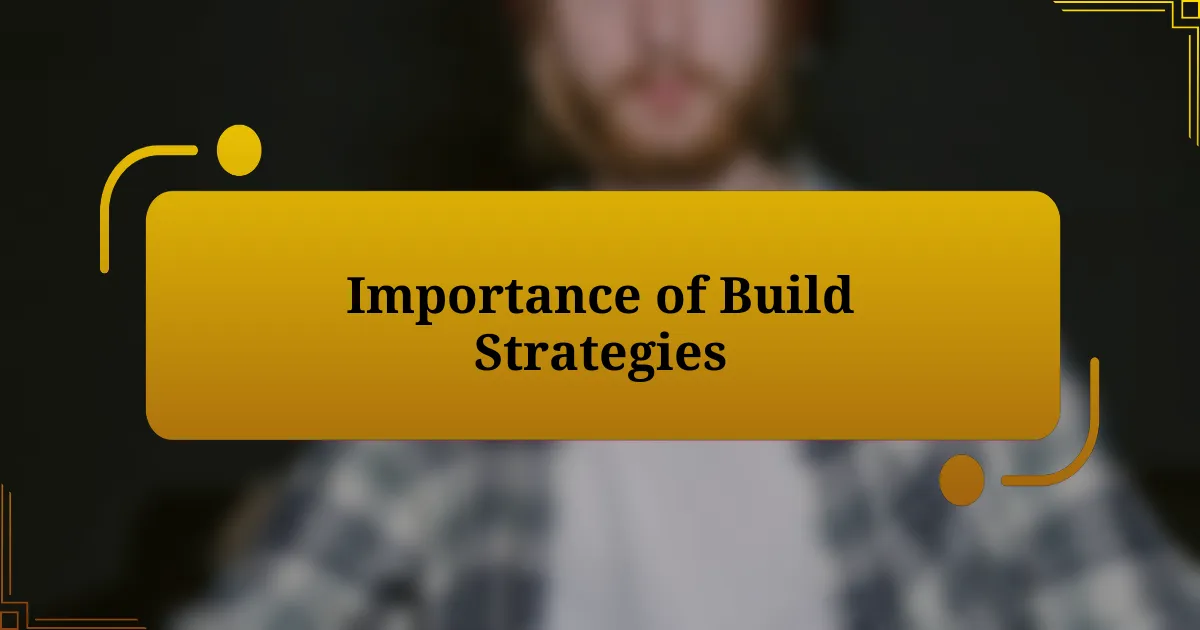
Importance of Build Strategies
Build strategies are essential because they can make or break your effectiveness during a match. One time, I chose a build that seemed off-meta to others, and I could hear the skepticism in my friends’ voices. But as the game unfolded, my unconventional choices led to an unexpected victory, proving how a well-thought-out build can leverage unique strengths against the competition.
When I think about the importance of build strategies, I remember how I often underestimated item choices that catered to specific matchups. There was a game where I faced a formidable Zed. Realizing my usual build would leave me vulnerable, I quickly added a defensive item that completely shifted the dynamics. How often do you consider tailoring your items for immediate threats rather than sticking to a set plan?
Adapting your build strategy throughout a match not only increases your chances of winning but also enhances your understanding of the game. After a tough defeat, I started reviewing my itemization choices and realized how crucial flexibility was in maintaining relevance during combat. It’s like a puzzle; the better you fit the pieces together, the clearer the picture of success becomes.
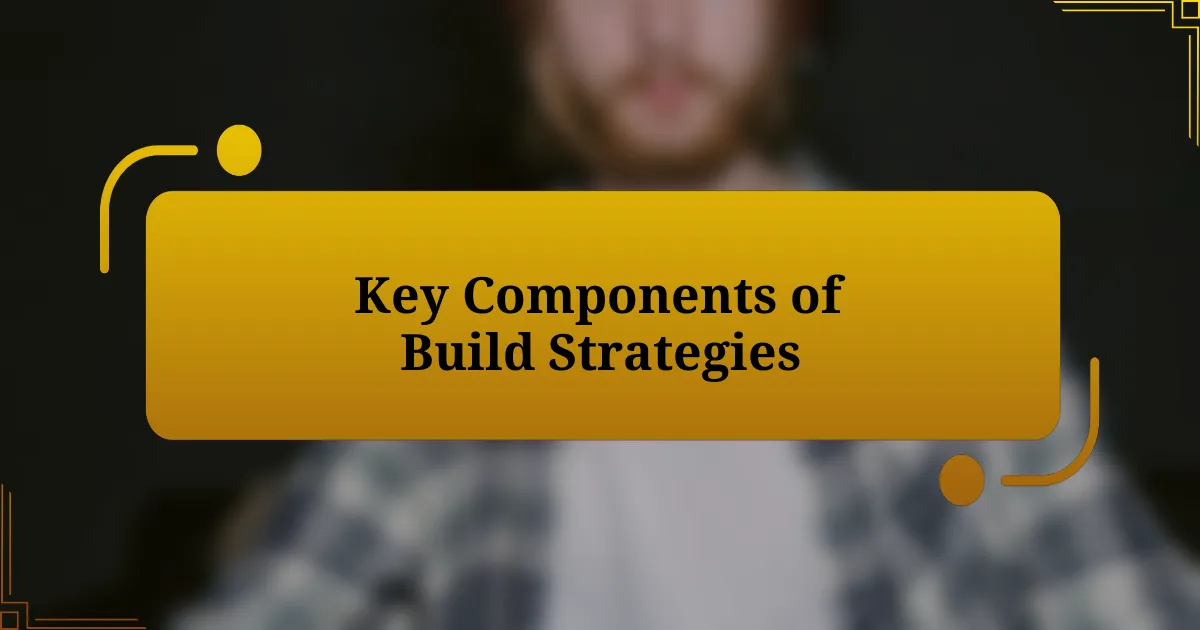
Key Components of Build Strategies
When I think about the key components of build strategies, I can’t help but emphasize the importance of synergy. Each item you choose should complement your champion’s abilities and playstyle. For instance, during one match, I played as Yasuo and made a point to prioritize items that increased my critical strike chance and provided mobility; the result was exhilarating. Have you ever experienced that moment when everything clicks, and your build feels perfectly tailored to the game?
Another critical aspect is understanding the current meta and how it impacts your item choices. I recall a game where I noticed the rise of tanky champions and their dominance. Adjusting my build to incorporate more penetration items allowed me to cut through their defenses. Does it ever feel like a game of chess, constantly reacting to your opponent’s strategy?
Don’t underestimate the role of counter-building. In a recent duel against an AP champion, I took a moment to pivot to more defensive items like Zhonya’s Hourglass. This decision turned what seemed like a sure loss into a thrilling comeback. Rethink your approach: how often do you evaluate not just your strengths but your opponents’ weaknesses when crafting your build? Tailoring your strategy to address these dynamics can be the key to turning the tide in your favor.

Analyzing Champion Roles
Champion roles in League of Legends significantly influence how I approach my build strategy. Playing as a support, for instance, has taught me the importance of itemization focused on utility. I vividly remember a game where I focused on items like Redemption and Mikael’s Crucible, which not only saved my teammates but also swung the momentum in our favor. Has there ever been a moment when your presence as a support felt like the glue holding the team together?
Delving deeper into roles, I find that understanding the nuances of each champion is crucial. I often analyze how their abilities interact with the game environment. One time, as a jungler using Lee Sin, I made a decision to prioritize mobility items, allowing me to reposition quickly during skirmishes. Did you realize how much an agile playstyle can turn the tide of a team fight?
Beyond just roles, recognizing the versatility of champions can open new avenues for your build. I recall experimenting with an unconventional build on Malphite, stacking AP items to surprise my enemies during team fights. They expected a tanky frontline, but I delivered unexpected burst damage instead. How often do you challenge traditional roles and find innovative ways to adapt? Exploring these possibilities not only keeps the game fresh but can also catch your opponents off guard.
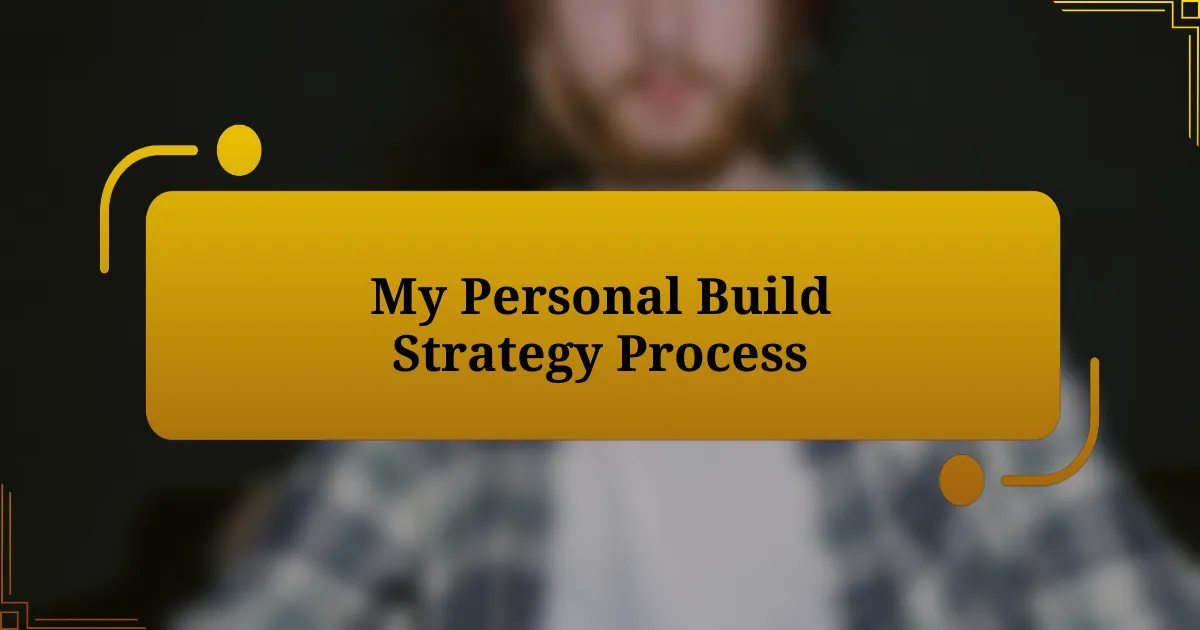
My Personal Build Strategy Process
When I sit down to decide my build strategy, I begin with a deep dive into understanding my champion’s strengths and weaknesses. For example, during a recent game with Jhin, I realized that maximizing my crit chance combined with cooldown reduction items was essential. This awareness transformed my approach and turned a few missed shots into critical game-changing moments. Have you ever felt that rush when your decisions directly impact your performance?
Next, I tap into the synergy between items and my champion’s abilities. I remember a match where I opted for Luden’s Echo on Zoe; the burst and extra mobility felt like magic. The thrill of seeing my skill shots not only land but also deal devastating damage inspired me to keep experimenting. Does your build provide you with that same sense of excitement and empowerment?
Lastly, I take time to reflect on the ever-changing dynamics of each match. It was a game where I switched from building tank items to glorifying ability power as a support, and it made me realize how flexible my strategy needed to be. I became a surprise element, catching opponents unprepared and turning fights in our favor. How adaptable is your strategy when the situation demands a shift?

Adjusting Builds for Different Matches
Adjusting my builds based on the match scenario is something I find essential. I recall a time when I faced a heavy AD composition; I switched to building armor items like Thornmail early on. The satisfaction of knowing I could withstand their onslaught both surprised my opponents and made me feel like a true wall in team fights.
In another match, things got tense when the enemy team picked champions with strong AoE crowd control. I pivoted to include QSS (Quicksilver) to nullify that threat effectively. The moment I activated it just in time to dodge a critical stun was exhilarating, and it reinforced my belief that adapting my build can completely alter the tide of battle. How often do you analyze your opponents to make those game-altering changes?
Sometimes it’s not just about counters but also about playing to my team’s strengths. I remember adjusting mid-game from a typical damage build on my AP carry to more utility-focused items like Zeke’s Convergence, allowing me to enhance my ADC’s output. That moment of unity made me realize how powerful adaptability and collaboration can be; have you experienced that thrill of synergy in your matches?

Tips for Improving Your Builds
One of the best tips I can share for improving your builds is to study item synergies. I remember my first time experimenting with Syzygy’s Greaves and how they complemented my cooldown reduction items beautifully. The increase in mobility and reduced ability cooldowns turned me into a menace on the map. Have you ever thought about how the right combo can elevate your gameplay?
Another key factor is keeping up with the meta. I often revisit item changes and champion performances after each patch. After noticing that certain items had shifted in popularity or power, I integrated them into my builds. The excitement I feel when discovering a previously overlooked item that suddenly becomes powerful gets me eager to jump back into the game. How do you keep track of these shifts?
Lastly, trial and error is invaluable. I can’t stress enough how important it is to experiment with different builds in normal games. I once tried a tanky AP champion build that felt unconventional, but it turned out to be surprisingly effective in absorbing damage while dishing out decent burst. That game taught me that even the most unorthodox strategies could pay off. What unexpected build changes have worked out for you?











